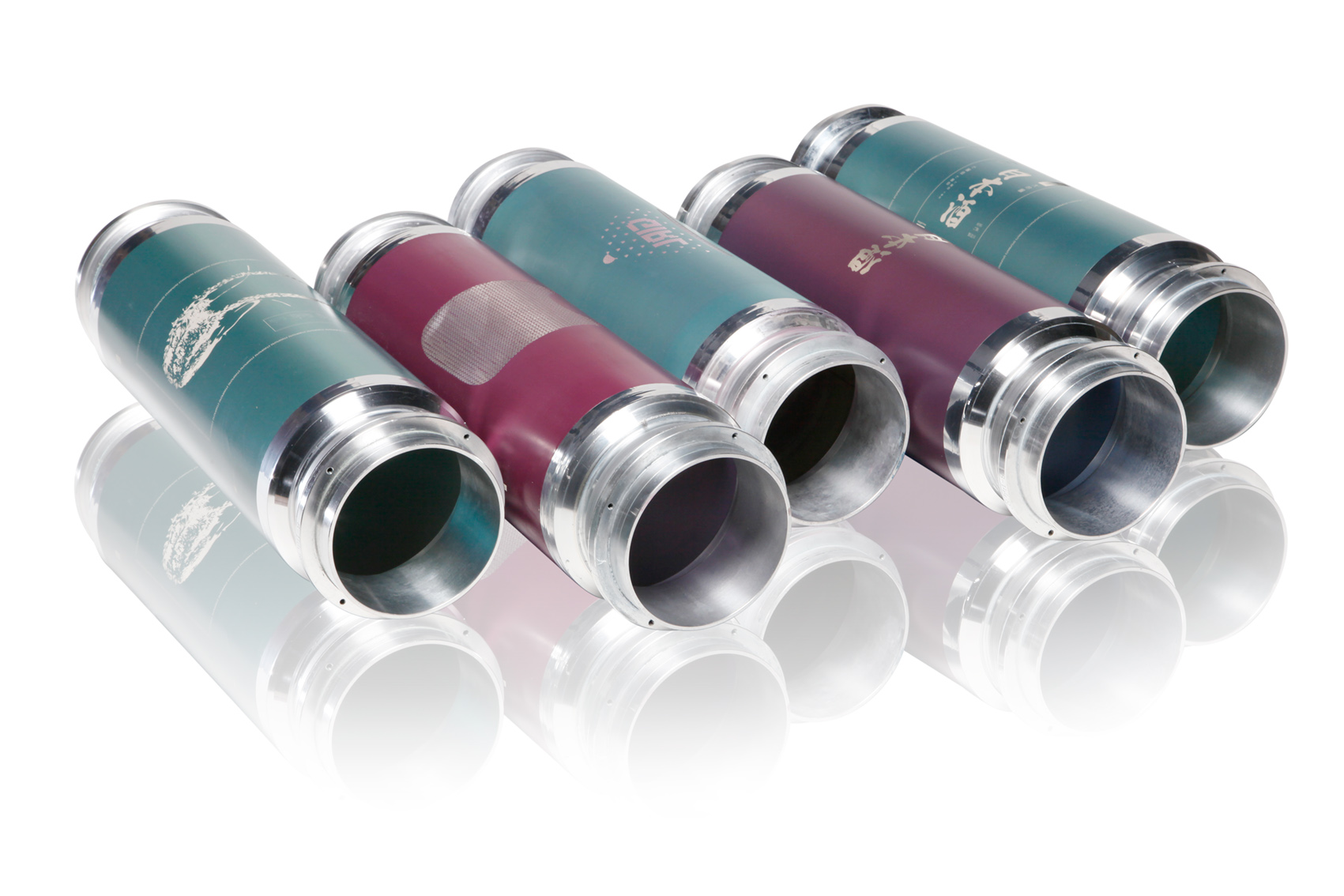There are multiple ways of cleaning your rotary screen and preparing it for re-coating to be ready for the next job.
When cleaning, care must be taken not to puncture or crease the screen as once a screen is damaged it’s rendered useless. An automatic screen-cleaning machine is a good solution to minimise damage and reduce cost.
If you don’t use many screens, then manual cleaning by a trained repro person may be the method of choice. A screen should only be drained and ink squeegeed out on the press; all other cleaning for re-use or stripping of emulsion will be done by your repro person.
Automatic screen cleaning
The automatic systems are designed for cleaning larger quantities of screens with fast turn-around times. There are single and multiple screen designs and both have high pressure water nozzles that combine a wash solution. Some of these systems add compressed air to reduce water consumption.
Many companies provide different solutions or even pastes for cleaning your screens. How the screen is cleaned depends on whether the screen is to be re-used, cleaned and stored for the next run, or the emulsion is to be stripped off.
When inquiring about an automatic system, this can be discussed with the supplier to meet your needs.
 Rotary Silk Screens by SPGPrints
Rotary Silk Screens by SPGPrints
Manual screen cleaning
When cleaning your screen manually, utmost care must be taken when applying a solution or paste to the emulsion to avoid damage.
Follow the specified time by the manufacturer on how long to leave the applied solution or paste. Once the recommended time has passed, take the screen to the washing bay and rinse it off. If there is any emulsion left, you can repeat this step on the affected areas until it’s clean.
If the screen is for re-use, a solution or paste will not be used, but a pressure wash. The manual process can take longer but the same results will be achieved, and it’s suitable for low numbers of screens.
Screen preparation
Once your screen has been cleaned it must checked and then rinsed in an isopropanol alcohol bath which can be purchased along with your automatic cleaning unit or manual wash station.
The screen must be free of any oils, soaps or any other contaminants before drying. Drying in a drying cabinet is required for all screens. This cabinet uses warm air to dry the screen.
Once your screen is clean and dried, place it in a clean, dust-free cabinet or apply emulsion for the next job. If it’s not cleaned and dried properly you could have issues when applying the emulsion, as well as possible imaging problems after exposure.
When the screen is for re-use, place it over a light bar to re-block non-image area defects or scratches with emulsion, thereby preventing defects on the next run.
Good preparation of your screen is important to achieve the best possible results for coating, exposure and printing. This can be achieved with good training and a designated person who hones their skills to deliver quality screens; this is crucial for the printer and the printing process.

Get in touch
These are simple tips for rotary screen cleaning and preparation, and I hope they’re useful for anyone in or outside of the printing industry.
If you have a topic you would like to know more about or suggestions on any of my snippets, please contact me. You can reach me via LinkedIn or via email k.marsh@mps4u.com.
My other label printing snippets are available here.